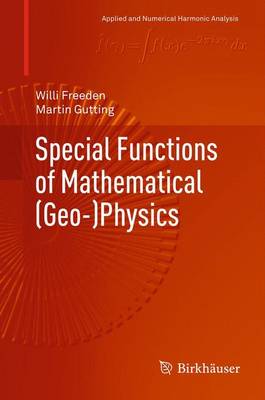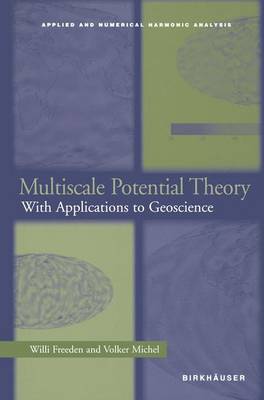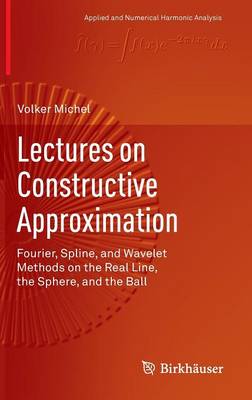Applied and Numerical Harmonic Analysis
3 total works
Special Functions of Mathematical (Geo-)Physics
by Willi Freeden and Martin Gutting
The special functions to be discussed in this monograph vary greatly, depending on the measurement parameters examined (gravitation, electric and magnetic fields, deformation, climate observables, fluid flow, etc.) and on the respective field characteristic (potential field, diffusion field, wave field). The differential equation under consideration determines the type of special functions that are needed in the desired reduction process.
Each chapter closes with exercises that reflect significant topics, mostly in computational applications. As a result, readers are not only directly confronted with the specific contents of each chapter, but also with additional knowledge on mathematical fields of research, where special functions are essential to application. All in all, the book is an equally valuable resource for education in geomathematics and the study of applied and harmonic analysis.
Students who wish to continue with further studies should consult the literature given as supplements for each topic covered in the exercises.
This self-contained text/reference provides a basic foundation for practitioners, researchers, and students interested in any of the diverse areas of multiscale (geo)potential theory. New mathematical methods are developed enabling the gravitational potential of a planetary body to be modeled using a continuous flow of observations from land or satellite devices. Harmonic wavelets methods are introduced, as well as fast computational schemes and various numerical test examples. Presented are multiscale approaches for numerous geoscientific problems, including geoidal determination, magnetic field reconstruction, deformation analysis, and density variation modelling
With exercises at the end of each chapter, the book may be used as a textbook for graduate-level courses in geomathematics, applied mathematics, and geophysics. The work is also an up-to-date reference text for geoscientists, applied mathematicians, and engineers.
Lectures on Constructive Approximation: Fourier, Spline, and Wavelet Methods on the Real Line, the Sphere, and the Ball focuses on spherical problems as they occur in the geosciences and medical imaging. It comprises the author's lectures on classical approximation methods based on orthogonal polynomials and selected modern tools such as splines and wavelets.
Methods for approximating functions on the real line are treated first, as they provide the foundations for the methods on the sphere and the ball and are useful for the analysis of time-dependent (spherical) problems. The author then examines the transfer of these spherical methods to problems on the ball, such as the modeling of the Earth's or the brain's interior. Specific topics covered include:
* the advantages and disadvantages of Fourier, spline, and wavelet methods
* theory and numerics of orthogonal polynomials on intervals, spheres, and balls
* cubic splines and splines based on reproducing kernels
* multiresolution analysis using wavelets and scaling functions
This textbook is written for students in mathematics, physics, engineering, and the geosciences who have a basic background in analysis and linear algebra. The work may also be suitable as a self-study resource for researchers in the above-mentioned fields.


